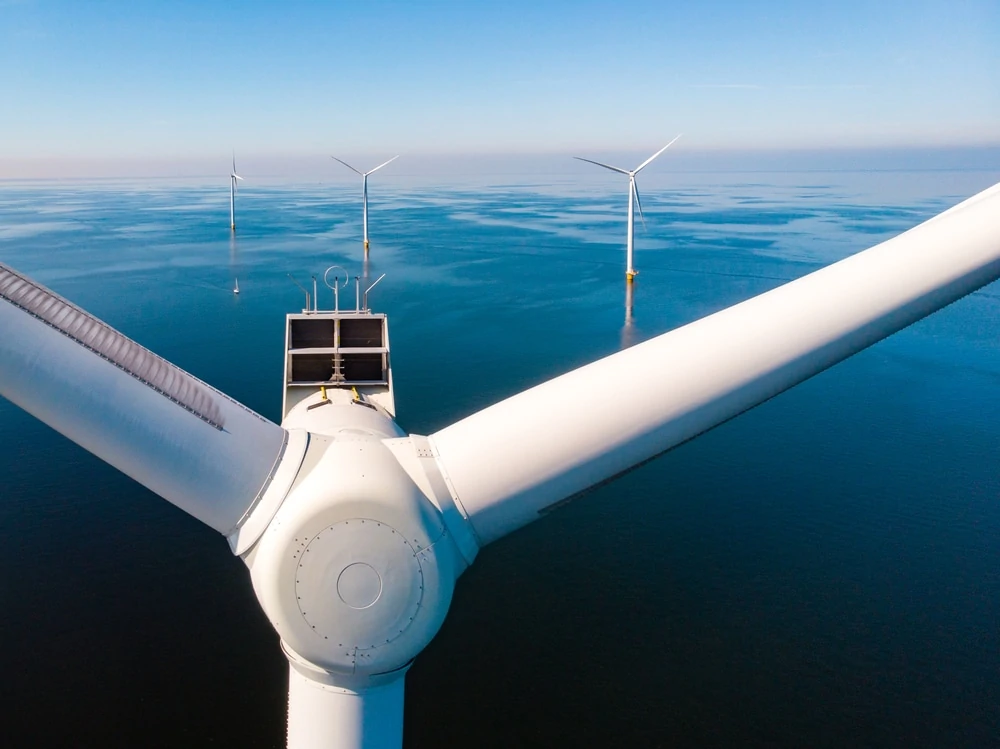China’s 14th Five Year Plan offers plenty to be positive about for the country’s emerging wind industry, and Britain could well play a major role
In 2015, the UK and China Offshore Wind Industry Advisory Group (IAG) was established to promote commercial, innovation and policy exchanges between both countries on offshore wind and to support the development of offshore wind and reduce its global costs. The IAG is made up of Renewable UK (RUK) and China Renewable Energy Engineering Institute (CREEI), and more recently, the Chinese Renewable Energy Industry Association (CREIA) has joined as the new leading partner from China.
A recent meeting by the IAG was held to discuss the potential collaboration between the two countries following the 14th Five Year Plan announcement. Britain is a world leader when it comes to offshore wind production, and the skills and expertise that the UK possesses will be in growing demand as China moves further towards sustainable and green energy production.
The 14th Five Year Plan is the new strategic transitional period of the offshore wind power industry, according to Hu Xiaofeng of CREEI. China will strive to achieve a 20GW grid-connected installed capacity of offshore wind power by 2025, which will account for about 6% of the total installed capacity of wind power plants in China.
According to Isabel DiVanna of RUK, the UK’s offshore wind industry already deploys over 10GW of capacity, and the RUK predicts it will reach 40GW by 2030 and 92GW by 2050 – ahead of government commitments of 30GW by 2030, she says.
Britain – as something of a windy island – has been ideally positioned to become a world leader in offshore wind energy production. The UK is currently home to the world’s largest offshore wind sector with 10.1 GW installed, which will rise to 19.5GW by the mid-2020s.
Nevertheless, China is expected to overtake the UK soon, with projections of achieving more than a fifth of global offshore wind capacity by 2030, according to the Global Wind Energy Council (GWEC). These numbers illustrate the UK and China’s complementarity, and the two country’s cooperation, as embodied by the IAG, allows the UK to share its unique strengths, create opportunities, and reach a common goal of accelerating the transition to low carbon.
Li Dan of CREIA explains that one of the challenges of the Chinese market is the need for China to ensure that it improves its quality whilst growing at a rapid rate. She also outlines the importance of market-oriented reforms in opening up new opportunities for investment, which will be important for securing future financing flows. China wants to promote investment and strengthen its industrial chain, so there are ample opportunities for UK-China engagement.
David Findlay of the Offshore Wind Energy Catapult said that heavy investment will be injected into the growth of offshore wind energy production in a bid to meet the UK’s Net Zero 2050 goal. Investment between now and 2030 will total £40 billion, he adds. This provides an interesting opportunity for Chinese companies, including developers, investors, OEMs and supply chain engagement.
The Prosperity Fund supports the UK-China Clean Energy Partnership and contributes to China’s transition to a low-carbon economy. Similarly, the British embassy has also been working closely with China’s National Energy Administration and CREEI on developing offshore wind projects to generate policy impact on China’s renewable energy development without subsidies.
Prosperity Fund projects have recently included case studies of UK offshore wind projects, recommendations on improving China’s policy framework, a framework for the localisation of the UK’s successful Offshore Wind Accelerator programme, studies on investment risk for Chinese investors in offshore wind, a proposed cost-reduction framework for China’s offshore wind sector, and policies and policy recommendations for Jiangsu and Guangdong provinces.
Following this series of successful meetings and follow ups from the IAG, a number of plans will be put in place to forge closer ties: further exploration relating to new technology such as distributed energy and hydrogen production, health and safety requirements and government regulations as well as further funding with green finance.


